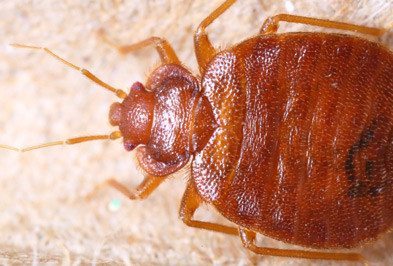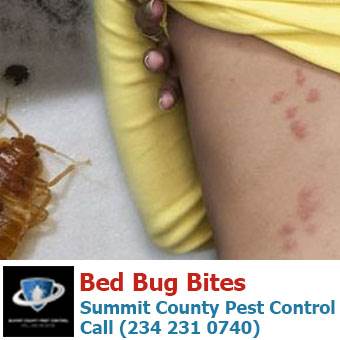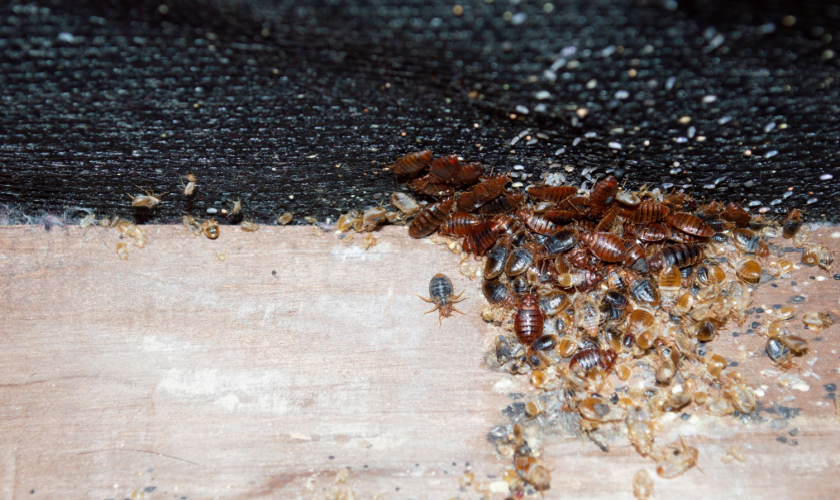Comprehensive A1 Bed Bug Extermination in Houston Area
Comprehensive A1 Bed Bug Extermination in Houston Area
Blog Article
Understanding the Lifecycle of Insects for Targeted Control Techniques
Recognizing the lifecycle of bugs is a fundamental facet of efficient parasite administration approaches. With a much deeper understanding of exactly how pests progress and thrive, customized control strategies can be created to address certain points in their lifecycle, eventually leading to even more successful bug monitoring results.
Relevance of Understanding Bug Lifecycle
Understanding the lifecycle of insects is essential for developing effective and targeted control methods in pest administration. By understanding the numerous phases an insect undergoes from egg to grownup, pest control experts can determine at risk points in the lifecycle where intervention can be most successful. Recognizing when larvae are most active can assist establish the optimum timing for applying larvicides. Additionally, comprehending the life expectancy of a parasite species can aid in anticipating population growth patterns and prospective problem threats.
Moreover, acknowledging the specific environmental conditions needed for every stage of the bug's lifecycle can lead choices on environment adjustment or exclusion methods to reduce and interfere with the lifecycle parasite populaces. This expertise makes it possible for pest monitoring specialists to apply aggressive procedures instead than depending exclusively on reactive therapies, leading to even more lasting and lasting bug control services. Eventually, a detailed understanding of parasite lifecycles equips bug control professionals to customize their approaches properly, lessening environmental impacts and maximizing control outcomes.
Key Phases in Insect Development
To successfully implement targeted control approaches in pest administration, an important aspect lies in adequately identifying and comprehending the essential stages in pest development. Pest growth commonly is composed of numerous crucial stages that are essential for their lifecycle and management.

Susceptabilities in Bug Lifecycle
Throughout the various stages of an insect's lifecycle, distinct susceptabilities arise that can be purposefully targeted for efficient control steps (A1 bed bug extermination houston). One essential susceptability lies in the egg phase, where bugs are typically much more susceptible to particular insecticides or biological control representatives due to their soft outer covering, making them much easier targets for intervention. Recognizing these susceptabilities over at this website in the insect lifecycle is important for developing specific and effective control methods that efficiently take care of bug populaces while minimizing ecological effect.
Implementing Targeted Control Actions

Carrying out targeted control steps generally entails a multi-faceted method. This may consist of habitat modification to make the environment much less congenial to pests, such as getting rid of standing water for insect control or sealing access factors for rodents. Additionally, organic control techniques can be utilized, where natural killers or microorganisms are introduced to maintain bug populations in check.
Chemical control, such as the mindful application of pesticides, is another typical strategy. Nonetheless, it is necessary to use these compounds deliberately to reduce ecological effect and potential damage to non-target varieties. Integrated Insect Monitoring (IPM) strategies that integrate numerous control actions in a coordinated and sustainable way are commonly one of the most efficient in attaining long-term insect administration objectives. By applying targeted control steps based on a detailed understanding of pest lifecycles, insect populations can be efficiently managed while lessening threats to human wellness and the setting.
Improved Insect Management Practices

In addition, the consolidation of organic control agents, such as all-natural predators or pathogens of pests, can help in reducing dependence on chemical pesticides and promote an extra balanced ecosystem. Carrying out physical barriers and traps can additionally become part of boosted bug administration techniques, using non-toxic and targeted remedies for insect control. In addition, making use of scents and other semiochemicals can interrupt pest mating patterns and communication, bring about reduced bug populaces over time.
Final Thought
In verdict, understanding the lifecycle of insects is critical for effective insect administration approaches. By identifying crucial phases in insect advancement and susceptabilities in their lifecycle, targeted control measures can be executed to decrease pest populations. Enhanced insect administration practices can help in reducing the reliance on broad-spectrum pesticides and promote even more lasting and eco-friendly pest control methods. This knowledge plays a crucial duty in keeping healthy and balanced ecosystems and farming performance.
Recognizing the lifecycle of parasites is essential for developing effective and targeted control strategies in pest monitoring. By understanding the numerous phases a parasite goes with from egg to adult, pest control professionals can recognize prone points in the lifecycle where intervention can be most effective. Eventually, a detailed understanding of parasite lifecycles equips pest control practitioners to tailor their strategies effectively, minimizing ecological influences and making the most of control results.
By implementing targeted control steps based on a detailed understanding of insect lifecycles, parasite populations can be efficiently regulated while minimizing threats to human health and the setting.
By determining vital stages in bug development and susceptabilities in their lifecycle, targeted control actions can be carried out to reduce pest populaces.
Report this page